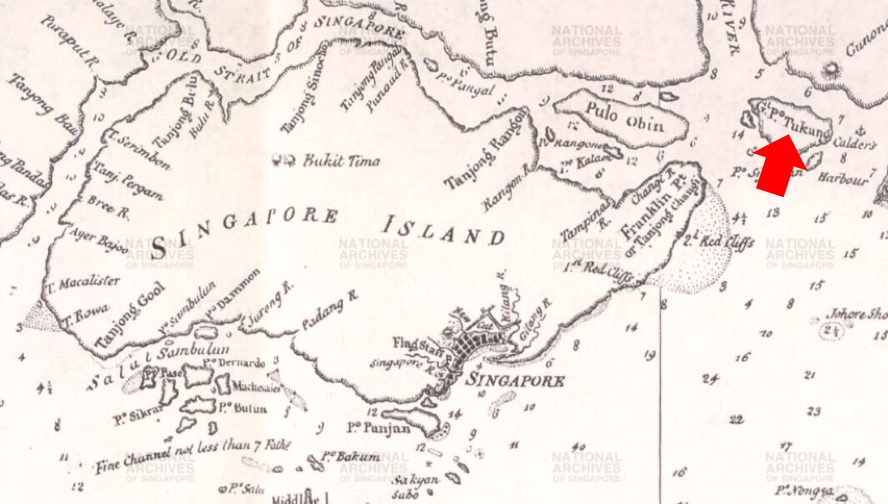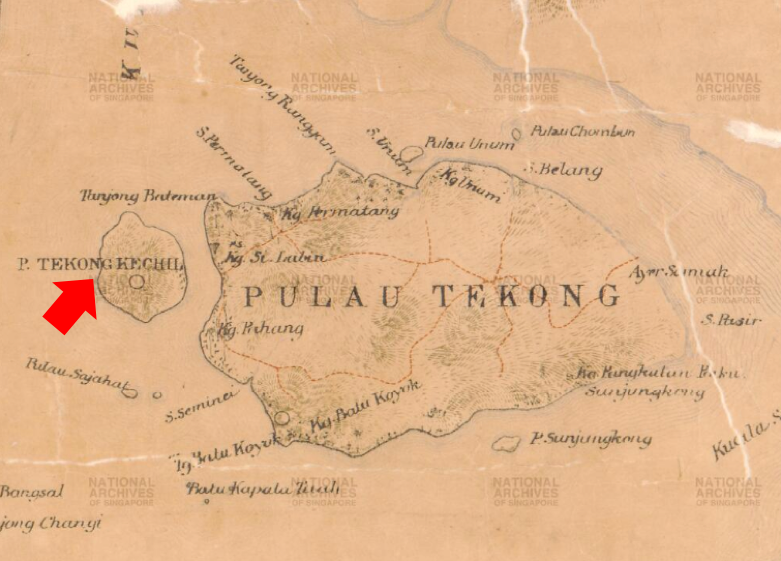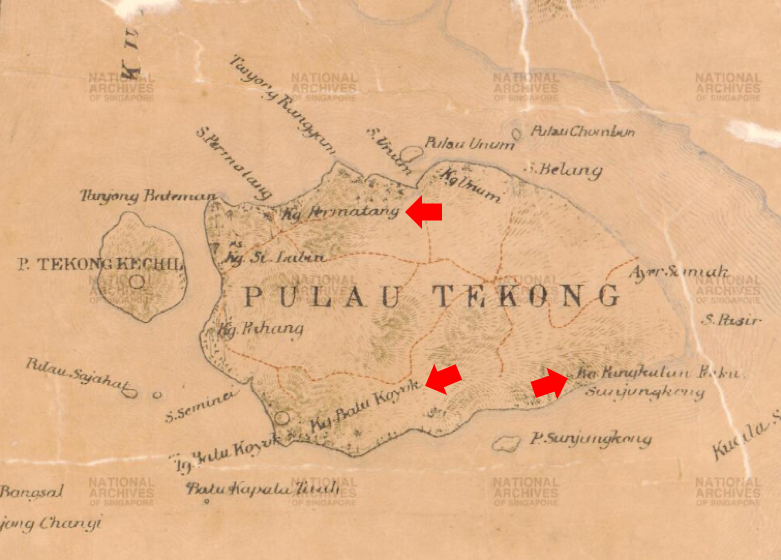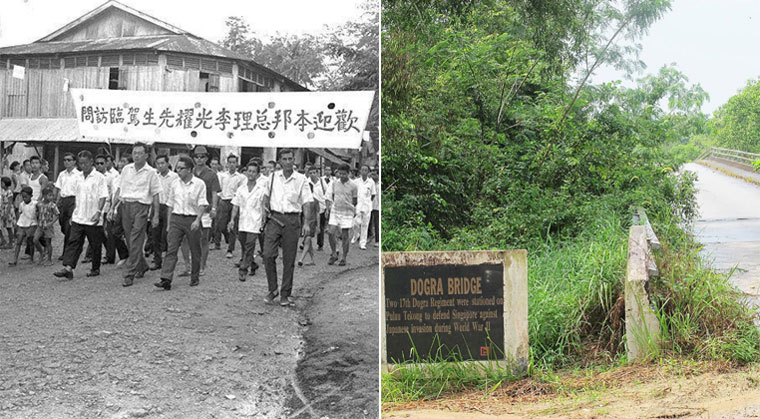Pulau Tekong holds a special place in many male Singaporeans' hearts, especially those who have served their National Service stint in the army
What many do not know is that Pulau Tekong is more than a training ground for the military in its present incarnation.
In a Facebook post on Feb. 2, Minister for Education (Higher Education and Skills) and Second Minister for Defence Ong Ye Kung shared his memories of his army days in Pulau Tekong, together with snippets of its history.
Here are four things we learnt about Pulau Tekong’s history from Ong’s post:
1. The island was known by different names in the past
Pulau Tekong was labelled as Po. Tukang, which means "merchant" in an 1837 map of Singapore.
In an 1850s map of Singapore, the island was known as Tikong, while another from the 1898 labelled it by the name we know it today, Pulau Tekong.
 Source: NAS
Source: NAS
2. Tekong comprised two islands till the mid-1990s
There was a large Pulau Tekong and a smaller Pulau Tekong in the past.
In the map from 1898 below, the smaller of the two islands is labelled as "P. Tekong Kechil", where "kechil" means "small" in Malay.
 Source: NAS
Source: NAS
3. Pulau Tekong used to serve as a trading station for Pulau Ubin and Johor
The island's status as a trading station saw many civilians inhabiting Pulau Tekong's kampongs ("village" in Malay).
Ong said that while the island was no longer inhabited by civilians, the names of the old kampongs live on in training areas, such as Selabin, Permatang and San Yong Kong.
The 1898 map below shows the many kampongs that dotted the island, such as Kampong Batu Koyok, Kampong Permatang, and Kampong Pangkalan Paku.
 Source: NAS
Source: NAS
Before Pulau Tekong became the Basic Military Training Centre, it was a busy commercial centre with shophouses around.
The picture below shows Prime Minister Lee Kuan Yew on a visit to the island in 1965.
[caption id="" align="aligncenter" width="768"] Source: Ong Ye Kung's Facebook[/caption]
Source: Ong Ye Kung's Facebook[/caption]
Some of the kampong's wells still exist on the island.
[caption id="" align="aligncenter" width="960"] Source: Ong Ye Kung's Facebook [/caption]
Source: Ong Ye Kung's Facebook [/caption]
4. The British maintained a military presence on the island
According to Ong, there were British gun batteries and a British Indian infantry unit stationed on Pulau Tekong.
The Dogra and Sphinx bridges on the island also derived their names from the British gun batteries during World War II. The 17th Dogra bridge got its name from the Dogra Regiment, an infantry unit from the British Indian Army while the Sphinx bridge was named after the Sphinx Battery that was stationed on the island.
[caption id="" align="aligncenter" width="960"] Dogra Bridge. Source: Ong Ye Kung's Facebook[/caption]
Dogra Bridge. Source: Ong Ye Kung's Facebook[/caption]
Here is Ong's full Facebook post:
Top image from Ong Ye Kung's Facebook.
If you like what you read, follow us on Facebook and Twitter to get the latest updates.
If you like what you read, follow us on Facebook, Instagram, Twitter and Telegram to get the latest updates.
